CASE STUDY: Adventures of a Mathematician
Official Synopsis: Adventures of a Mathematician is the warmhearted true story of Polish immigrant and mathematician Stanislaw “Stan” Ulam, who moved to the U.S. in the 1930s. Stan deals with the difficult losses of family and friends, all while helping to create the hydrogen bomb and the first computer.
Type of project: Narrative Feature
Director: Thor Klein
Writer: Thor Klein (based on the memoir by Stanislaw Ulam)
Producers: Lena Vurma, Paul Zischler, Joanna Szymanska, Nell Green
Co-production: Germany, Poland, UK
Financing: Government funding, tax credit, private equity, Sloan Film Grant (TFI, Film Independent)
Shooting Format: Digital; ARRI Alexa with vintage lenses
Screening Format: DCP
World Premiere: Palm Springs International Film Festival (January 2020)
Distributor: Samuel Goldwyn Films (US theatrical, digital day-and-date)
Website: Official Site
DEVELOPMENT & FINANCING

“It actually started around 30 years ago,” says writer/director Thor Klein of the path that lead to the completion of his sophomore feature, Adventures of a Mathematician. As a 13-year-old in Ramstein, Germany, he found among the stacks in his local library the book Who’s Got Einstein’s Office? (Ed Regis, 1988), about the Institute for Advanced Study—whose ranks included J. Robert Oppenheimer, architect of the Manhattan Project. “Even though they were mathematicians, they very different from the mathematics teachers I’d had in school—throwing wild parties and driving fast cars—so I was really, really intrigued,” he says.
At onetime an aspiring scientist himself, Klein eventually realized he was much better suited to telling stories about mathematicians than trying to be one. “When I was in film school, I came across Stan’s book,” he explains, of his first encounter with Adventures. Struck by the tragedy at the core of Ulam’s story—a story shared by many of the Manhattan Project team who were also European émigrés (and refugees) who lost family in WWII—he approached producer and collaborator Lena Vurma about turning the book into a feature.
“He came with the idea first, and then I had to find out who had the rights so I could option it,” says Vurma. At this early stage (around 2015) Klein had yet to write a script for the project, but the duo had already worked together on 2013’s science-based mystery Lost Place. After negotiating adaptation rights with the Berkley Press in the US, writing began in 2016. One of the earliest forms of Sloan support the film received was the TFI Screenplay Development Award.
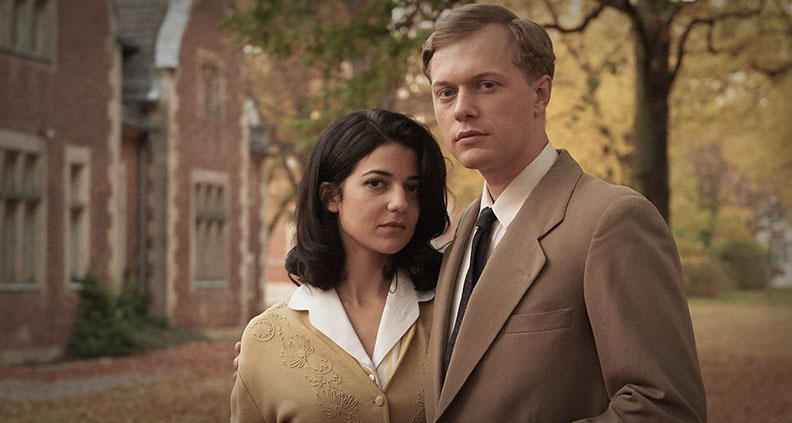
Sloan’s support included providing mentors in the form of Turing’s Cathedral author George Dyson and Hidden Figures producer Donna Gigliotti. “It’s what I was hoping for,” says Klein, “getting these grants and being able to do research in the US—to go to all these places and archives and get a glimpse about the relationships between all these people.” Such research, Vurma says, helped fill in the gaps in Ulam’s original “memoir” (actually written by his wife, Françoise Aron Ulam), which had been published prior to the declassification of many of the details around Ulam’s Oppenheimer-era work.
“It was clear from us from the beginning that we wanted to co-produce the film with Poland,” says Vurma, of Ulam’s home country. To that end, Vurma’s Dragonfly Films and partnered with Joanna Szymanska and Shipsboy as co-producers. “We structured it as a German-Polish co-production,” explained Vurma, saying that their search for a third pillar of support came from the UK, where the film’s post-production was completed.
“So in the end we had government funding from Poland and Germany, and tax credits from the UK and the post-production in-kind deal from the UK, and some equity from Germany and the UK,” she explains, “and then the Sloan Grants”—including the Film Independent Producers Lab grant for $30,000.
“In the end [the budget] was around four million Euros, but a lot of that was deferrals,” says Vurma. “Which for a period piece is nothing,” she adds.
PRODUCTION
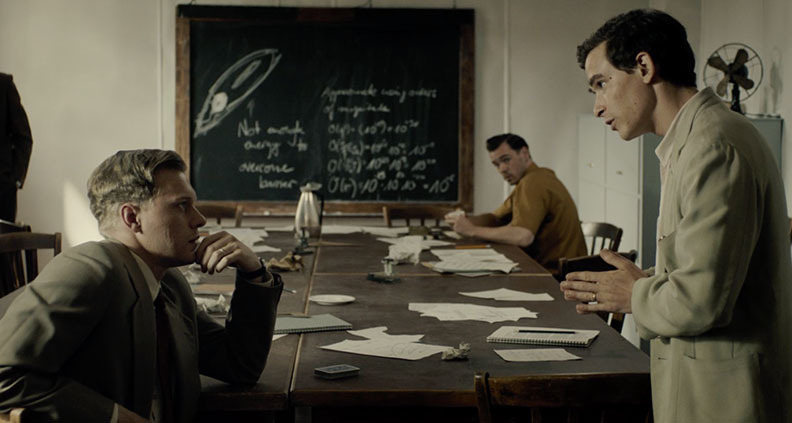
Set entirely in the US, and largely in New Mexico, Adventures of a Mathematician was filmed—where else?—in Germany and Poland, the film’s two primary financiers. This required switching out maddeningly small details on set like light fixtures, windows and doorknobs. “Just everything, basically,” Vurma laughs. Eventually a Second Unit team was deployed “for a few days” to shoot on location in New Mexico. “We actually recreated the entire Fuller Lodge on a sound stage in Germany—and of course now Christopher Nolan is shooting in the real Fuller Lodge,” observes Vurma. “We’ll see how that goes.”
“I wanted the feeling of coming to this place that’s makeshift and that actually worked in our favor—our film set is also makeshift,” says Klein. “I wanted to shoot it with long takes to make it as immersive as possible and to get the most out of the sets.” Klein’s Romanian Director of Photography Tudor Vladimir Panduru helped imbue the film with the spirit of Eastern European cinema.
The film’s “Los Alamos” was improbably rebuilt on a decommissioned Russian airfield outside of Berlin. “Overall, we had 28 shooting days plus one day of reshoots—so 29 days in total, which is not a lot,” says Vurma. Shot digitally on ARRI Alexa cameras, the secret ingredient to Adventures of a Mathematician’s striking look was a collection of vintage 1970s lenses. “The same kind of lenses that The Godfather was shot on,” says Vurma.
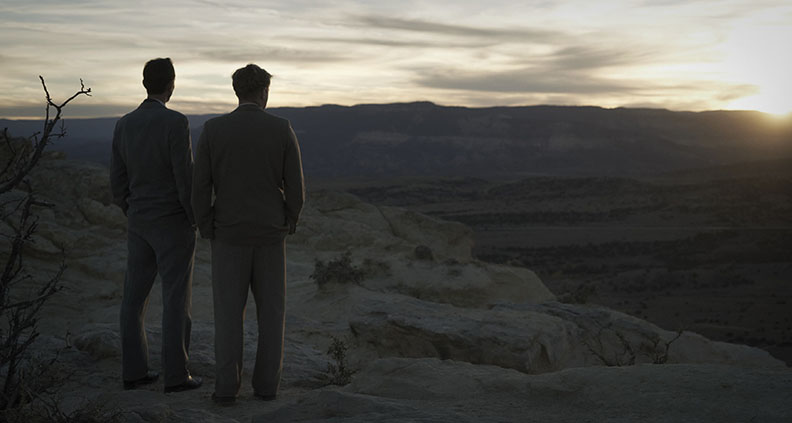
“It was clear that the editing would need to happen in the UK,” due to the film’s financing deals, says Klein. “It’s a very particular thing to edit a film shot in long takes,” he adds, “It’s all about creating and maintaining a certain sense of rhythm. For me that was the biggest worry, because you can easily ruin it.”
The team ultimately enlisted Son of Saul cutter Matthieu Taponier. Nevertheless the team went over its editing deadlines, “which happens in independent cinema,” according to Klein. “It’s sometimes hard to tell what the reality [of editing time] is going to be.” Klein also praised the quality of sound engineers he was able to find in the UK, but overall “it was quite an intense time,” he says.
Vurma, Klein and Taponier were forced to move out of their post-production facilities and edit from home in order to save on costs. The producers had an in-kind deal with London’s LipSync for color and finishing. “Thor basically moved to London for half a year to finish post,” says Vurma.
FESTIVAL STRATEGY
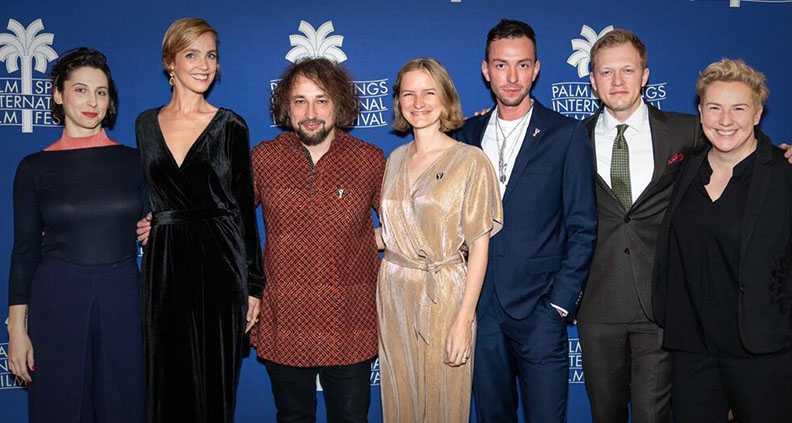
To date, Adventures of a Mathmetician has played 50+ festivals worldwide. “We were kind of lucky and unlucky at the same time,” says Vurma of the film’s world premiere at the Palm Springs International Film Festival in 2020 just before the COVID-19 lockdown wire. After Palm Springs, the film endured a long six-month period where the team was unable to visit festivals at all. One exception: the International Peace Film Festival in PyeongChang, South Korea.
But starting in 2021, the team made up for lost time, traveling to locales ranging from Fort Lauderdale to Perth, Australia. One particular area of focus were Jewish festivals—Stan Ulam being a refugee Central European Jew, as were many of his scientific peers in Los Alamos.
THE SALE & RELEASE
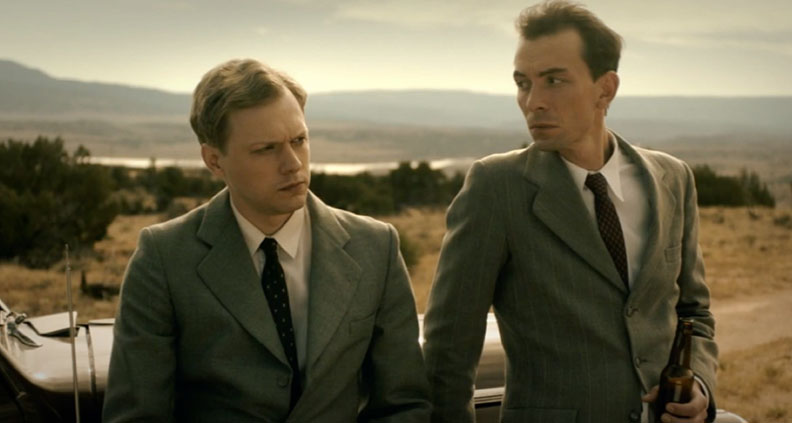
Of the strength of their festival run, Team Adventures of a Mathematician worked with international brokers Indie Sales to sell the film to over 20 territories for theatrical distribution, beginning in Poland. In late 2021, Samuel Goldwyn acquired US distribution rights and premiered the film day-and-date with special screenings in Sante Fe and Los Alamos. A rooftop screening in New York even had a special guest: Stanislaw Ulam’s granddaughter.
The film continues it rollout to festivals, with special screenings—with virtual Klein and Vurma Q&A’s—to universities including MIT, Princeton and other institutions renowned for their math and physics departments.
According to Klein, the subject matter couldn’t be more of the moment. “In the news, we actually are seeing discussion of the possibility that people might use nuclear weapons again—so [the film] has become very timely,” he says.
On the role the Sloan Distribution Grant played in helping the film find its audience, Vurma says: “I did a lot of research on hybrid releases—which was big during the pandemic—and how to maximize audience outreach with the help of the grant.” She says the grant also helped the team “to really push to get the best offer” for US distribution, eventually landing Samuel Goldwyn Films. The grant also helped pay for additional grassroots marketing and consultation services.
Filmmaker advice: “I knew early on that I needed to connect the math with the emotions [of the film],” says Klein. “To make it meaningful I had to find that connection… If you have scientist character, you need to understand: Why is this so important to them? You need to find that out, because in the end, yes, it’s about the science. But in [our] case it’s also about all the underlying themes connected to the science—the emotion, the meaning.”
Says Vurma, speaking from the practical producer’s perspective: “You need to think about what kind of [financial] collaborations are organic”—especially in regard to seeking support from national film arts organizations.
The 2022 Sloan Film Summit is happening April 8-10 in Los Angeles. Stay tuned to sloanfilmsummit.org for videos, blog recaps and more. Follow our coverage on Film Independent’s Twitter, Facebook and Instagram.
